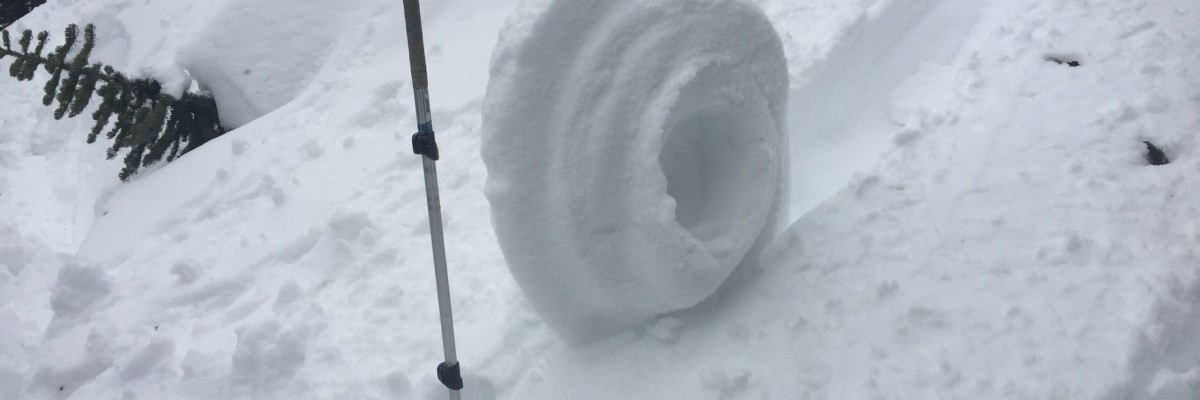This is Travis Craft with a Spring conditions update.
SPRINGTIME SNOW SAFETY CONSIDERATIONS
Spring time is a mixed bag of conditions. It can feel like winter and summer all in the same day. The primary considerations are looking at Snotel data to see if upper elevations have frozen overnight and what the weather forecast is for the day. You have to pay attention to changing conditions throughout the day.
The main avalanche problems are loose wet avalanches, cornices, wet slab avalanches; and also in the alpine, wind slabs and new snow bonding to old snow surfaces.
Loose wet avalanches can entrain a large amount of snow and carry a rider into a terrain trap. When the snow surface starts producing roller balls and pinwheels it is time to change to a shadier aspect.
Cornices are starting to weaken. These beasts are unpredictable, give them a wide berth because they break farther back than expected. Avoid traveling under slopes with cornices during the middle of the day.
Wet slab avalanches are very unpredictable. When you start to punch into the snowpack up to your knees or below the melt freeze crust, change your aspect and avoid steep slopes.
In higher elevations, where new snow is still falling, pay attention to how new snow is bonding to old snow surfaces. Shooting cracks give you bullseye data that the new snow is not bonding to the old snow surface.
Wind slabs will be present in the higher elevations on leeward slopes. Identify these features and how sensitive they are when traveling by looking for shooting cracks.
The take home points. If temperatures did not freeze overnight, instabilities in the snowpack will rapidly increase and the avalanche danger will rise throughout the day. Pay attention to changes throughout the day with weather and temperature.
This is our last information statement for this season. We will continue to monitor and post any public observations as we receive them and will post updated information if conditions change dramatically. If you get out and see something worth passing along, please send us an email or use the form available on our website at missoulaavalanche.org. The information provided might keep someone out of trouble.
Thanks for another great season and all the support this year! We couldn’t do it without your financial help, and it is deeply appreciated. A special thank you goes out to the dedicated board members of the West Central Montana Avalanche Foundation, our non-profit support organization.
Ski and ride safe.
























